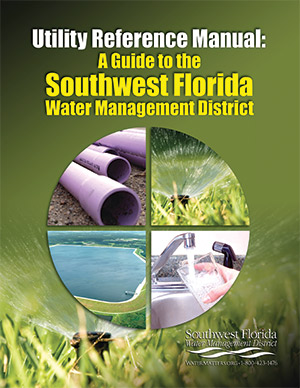
Improving communication between the District and the more than 190 public supply utilities in the region is the focus of a new utility outreach program that officially kicked off this summer.
This outreach program provides tremendous benefit to utilities by offering District tools, programs and resources that can help them meet the District’s regulatory requirements, conserve water and save money.
The need for strengthened communication was identified last year when staff noticed during Polk County Comprehensive Water Supply Planning meetings that many of the participating utilities were unaware of tools and programs offered by the District. Additional meetings with representatives from Plant City and Pasco County utilities confirmed that this lack of awareness was Districtwide.
To meet the need for improved communication, the District compiled a team of staff members from multiple departments to discuss possible solutions. The team decided to create a communication plan that included the development of a utility outreach program.
An important piece of the program is an easy reference manual for utilities that lists District tools and appropriate contact information. The guide, entitled the Utility Reference Manual: A Guide to the Southwest Florida Water Management District, was developed through collaboration across many District departments.
The 30-page manual describes numerous District tools in the areas of water conservation, water supply, funding, regulation and education. Some of these tools include population projection models, large customer water use evaluation checklists, irrigation evaluation software and additional technical expertise.
In addition to providing information through the manual, the program encourages feedback about specific challenges utilities are currently facing, resulting in a two-way street of communication that allows District staff to evaluate the current tools for helping utilities and identify additional needs for support.
“We understand all utilities are different and require tailored water supply plans,” said Ken Herd, District water supply program director. “For this reason, we have created four regional outreach teams to identify individual challenges and customize our outreach efforts.”
These teams include representatives from multiple District departments and are set up geographically to parallel the four regional planning sections of the north, south, Tampa Bay and heartland areas. “The creation of these regional teams with measurable objectives will allow staff to help accomplish Districtwide goals,” said Herd.
One such goal is to lower the historically high water use per capita rates in the northern region through conservation programs. Cara Martin, District community affairs program manager for that area, said the northern outreach team is using an individualized approach to introduce utilities to the program. The northern region is a key area of focus for the future, and conservation is a high priority.
“By learning about District tools in a one-on-one environment, staff is able to help utilities build customized conservation plans to work toward achieving District per capita and conservation goals,” said Martin.
To evaluate the future success of the program, staff surveyed utility managers prior to them receiving the reference manuals about their knowledge of District tools and their opinions about communicating with the District. A follow-up survey will be sent on an annual basis to gauge the increase in knowledge and any changes in opinions.
“The primary benefit of this outreach will be to proactively align utilities with the District’s regulatory requirements prior to water use permit renewals,” said Herd. “We hope this program will serve as an example of the positive results that can be achieved when state and local governments work together to protect the environment while meeting the water supply needs of the public.”
